The Kenyan sand boa is a desert-dwelling snake that lives in the eastern regions of northern Africa. This cute snake has become a popular pet in recent years, and interest in it has skyrocketed. Part of what makes the sand boa so popular is its adorable looks, easy handleability, and unique color variations. Today, we are going to be learning (and seeing) all about these Kenyan sand boa morphs. Let’s get started!
What Is a Kenyan Sand Boa Morph?
In the world of snakes, a “morph” is simply a particular color or pattern that a breeder can reproduce through genetic selection. A Kenyan sand boa morph is a way of describing certain characteristics of a sand boa that breeders have genetically selected for.
For example, an “albino morph” is simply a snake that has a specific gene that lacks dark pigment, resulting in red and orange markings. Each morph can be made up of multiple traits (albino morph + striped morph) and combined in unique ways. Morphs are just the popular names for the result of this genetic selection.
Let’s go over some of the coolest sand boa morphs, plus look at a list of some of the other possible combinations.
The Coolest Kenyan Sand Boa Morphs
| Morph | Average price |
|---|---|
| Wildtype or normal | $75 |
| Albino | $175 |
| Anery | $100+ |
| Anery stripe | $175-$200 |
| Calico | Unknown |
| Dodoma | $300 |
| Nuclear | $100+ |
| Paradox | $300-$500, depending on the cross |
| Rufescens | $250+ |
| Snow | $200 |
| Stripe | $100 |
1. Wildtype
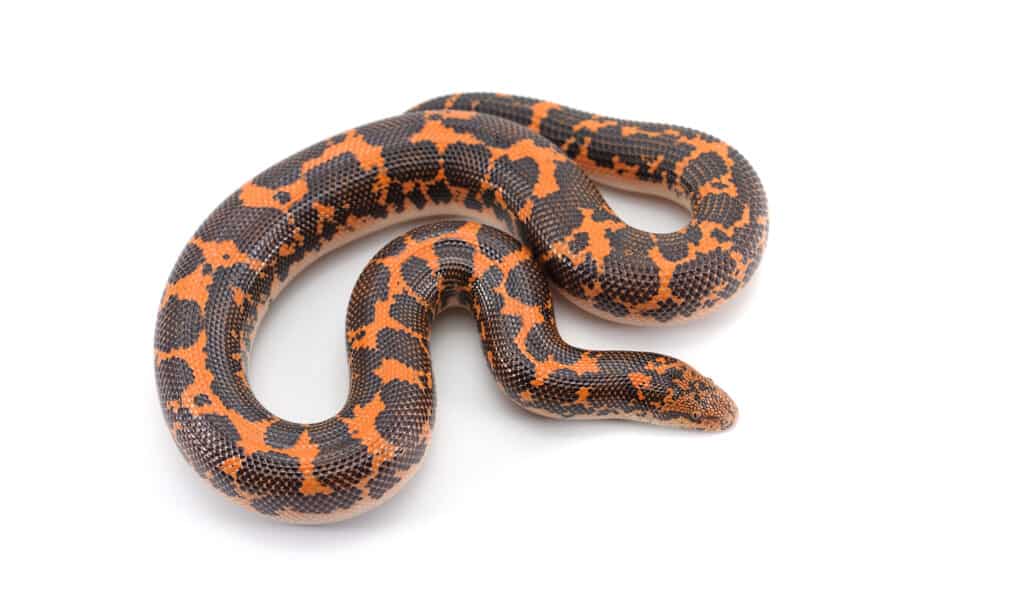
The standard Kenyan sand boa is orange with large brown splotches across its back.
©PetlinDmitry/Shutterstock.com
In the world of morphs, a “wildtype” simply refers to the snake in its natural coloration and pattern. If you were to go find a snake in the wild, you would find it expressing its wildtype morph.
Cost: $75
2. Albino
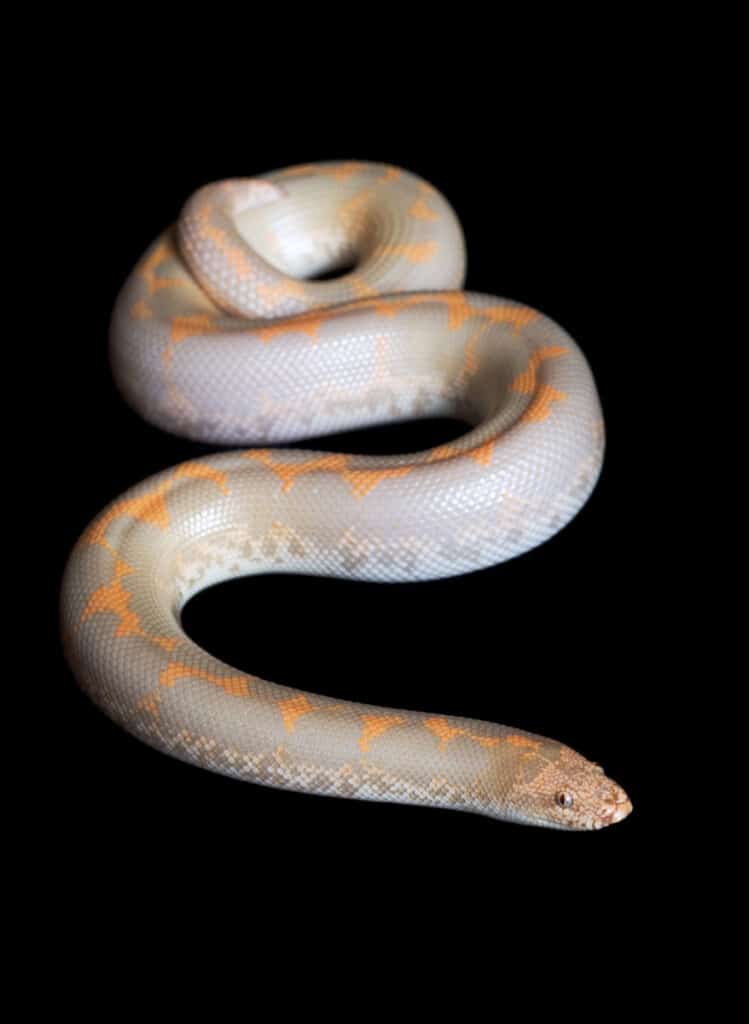
The albino Kenyan sand boa morph has a lack of melanin in its scales.
©iStock.com/Natalie Ruffing
The albino morph is characterized by a complete lack of melanin in the scales of the snake. Melanin is a darkening pigment that produces browns, blacks, and greys. Where the dark pigments would normally be on a sand boa, you will instead find white, yellow, or lavender.
Albino morphs are often the first morph created by snake breeders for a species since they can occur naturally in the wild.
Cost: $175
3. Anerythristic
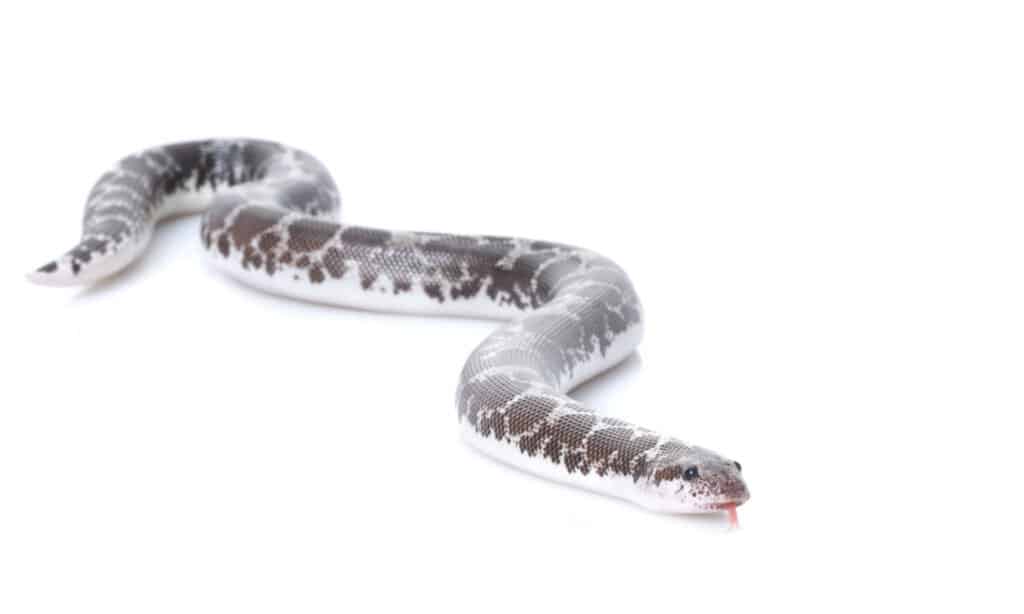
The anery morph is known for its lack of red and yellow pigments, causing the snake to be black and white.
©NatalieJean/Shutterstock.com
The anerythristic morph (often referred to as an anery morph) is characterized by a lack of red or yellow pigment in the scales of the snake. This pigment is instead replaced with melanin, and the resulting snake is usually black, white, and grey. Essentially, its the opposite of an albino snake. For any noir lovers out there, this morph is probably for you!
Cost: $100+
4. Anerythristic Stripe
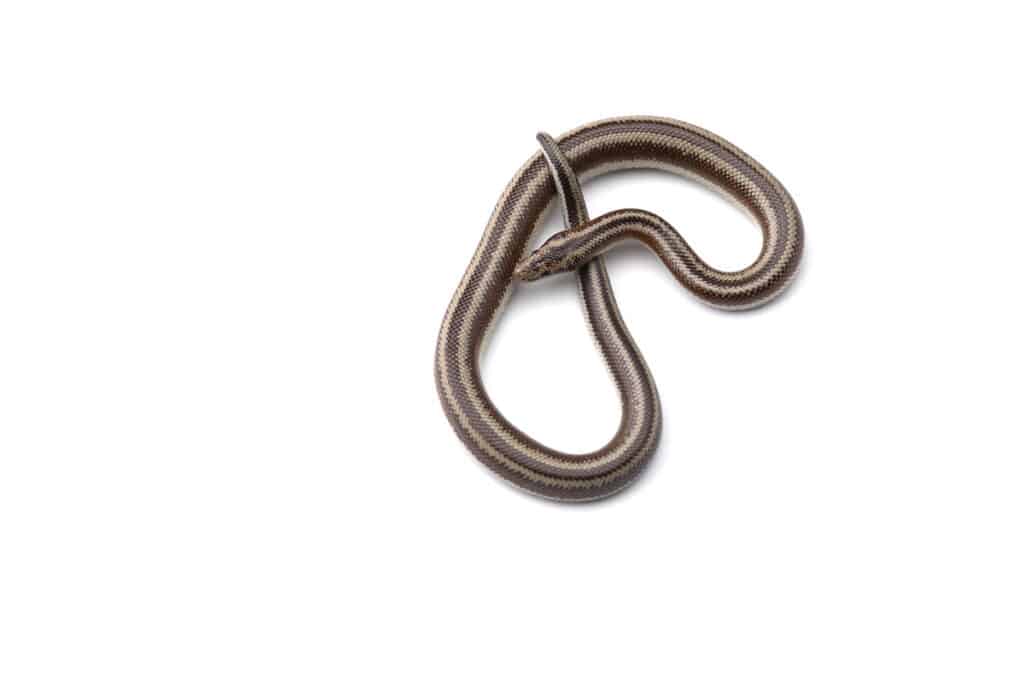
The anerythristic striped Kenyan sand boa is a combination of the anerythristic morph coloring and the striped morph.
©PetlinDmitry/Shutterstock.com
The anerythristic stripe morph is a combination of two morphs: the anerythristic morph and the striped morph. A stripe morph isn’t a color morph but rather a pattern morph. Breeders often combine the striped morph with other color morphs to create unique combinations that look incredibly different from wildtype snakes.
Cost: $175-$200
5. Calico
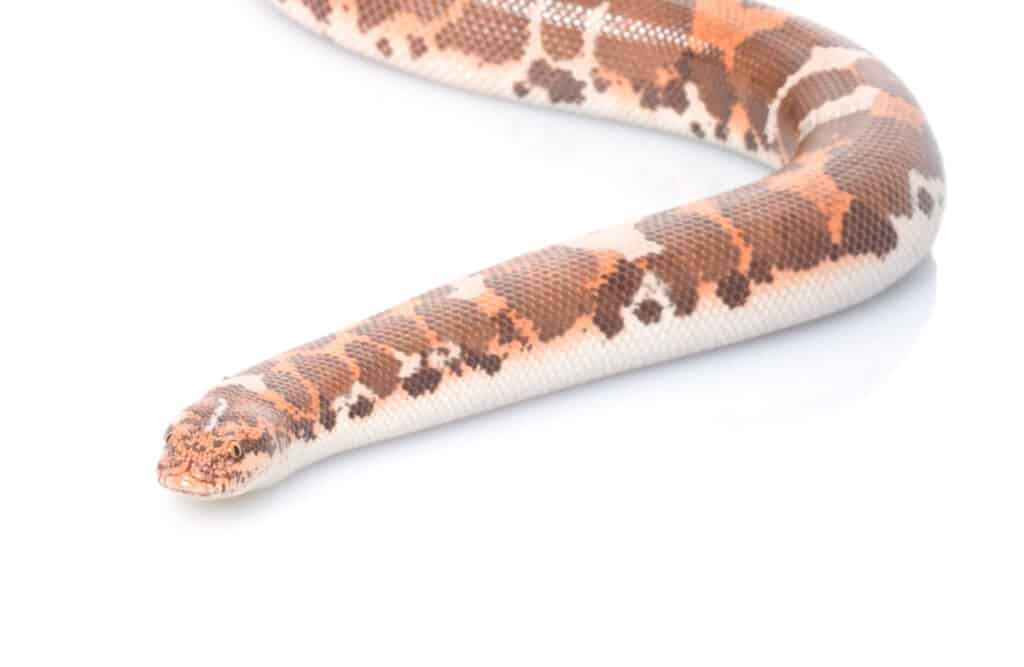
©iStock.com/Natalie Ruffing
The calico morph is extremely rare and difficult to find information on. It gets its name from the orange, black, and white colorations it has, similar to that of a calico cat. Additionally, the splotches are more random and almost overlap in some instances. Since these are rarer, getting an exact price on them is rather tough.
6. Dodoma
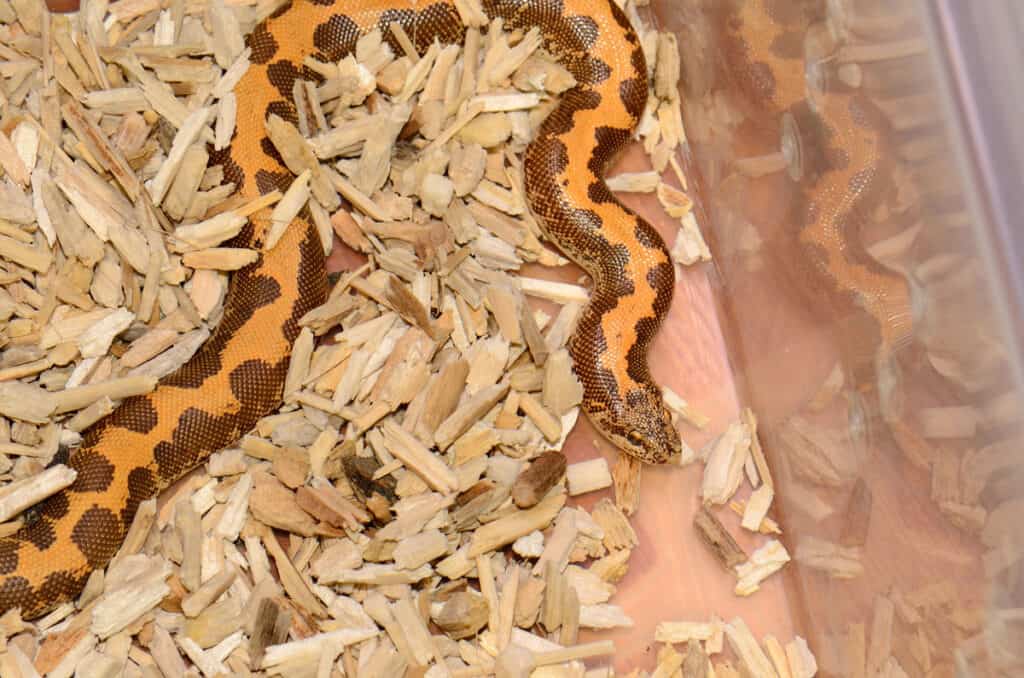
The Dodoma morph is named after the capital of Tanzania, where the first morph was discovered
©iStock.com/cowboy5437
The Dodoma morph is named after the capital of Tanzania, right around where the first example of the morph was found. Dodoma morphs have similar colorings to wildtypes, only their splotches are circular and much cleaner than normal boas.
Some researchers believe that the Dodoma morph may actually be a subspecies of Kenyan sand boa. Since these individuals seemed to have been genetically isolated, it’s possible they will be renamed!
Cost: $300
7. Nuclear
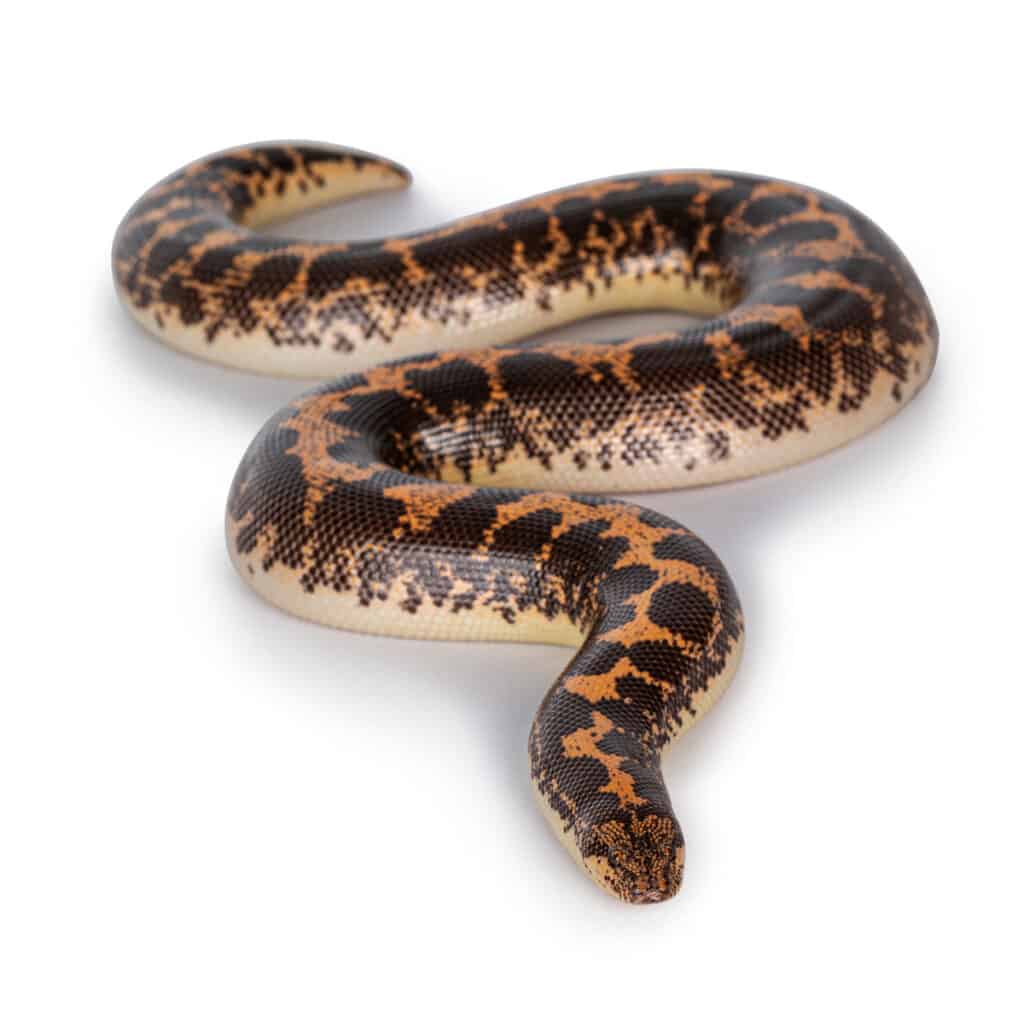
The nuclear morph has standard patterns with extra vibrant colors
©Nynke van Holten/Shutterstock.com
The nuclear morph is characterized by a vivid expression of colors, much brighter than what you would normally see on a sand boa. The patterning is the same as wildtypes, but this genetic trait makes those colors really pop, hence the name.
Cost: $100+
8. Paradox
The paradox morph is an interesting morph that exists in combination with another morph, usually an albino. Paradox morphs are characterized by random, pixelated speckling across the body of the snake. With an albino or snow paradox, there are little to no patterns, a white body, and brown or black “pixels” strewn across.
The resulting snake is incredibly beautiful, but it does come at a cost.
Cost: $300-$500, depending on the cross
9. Rufescens
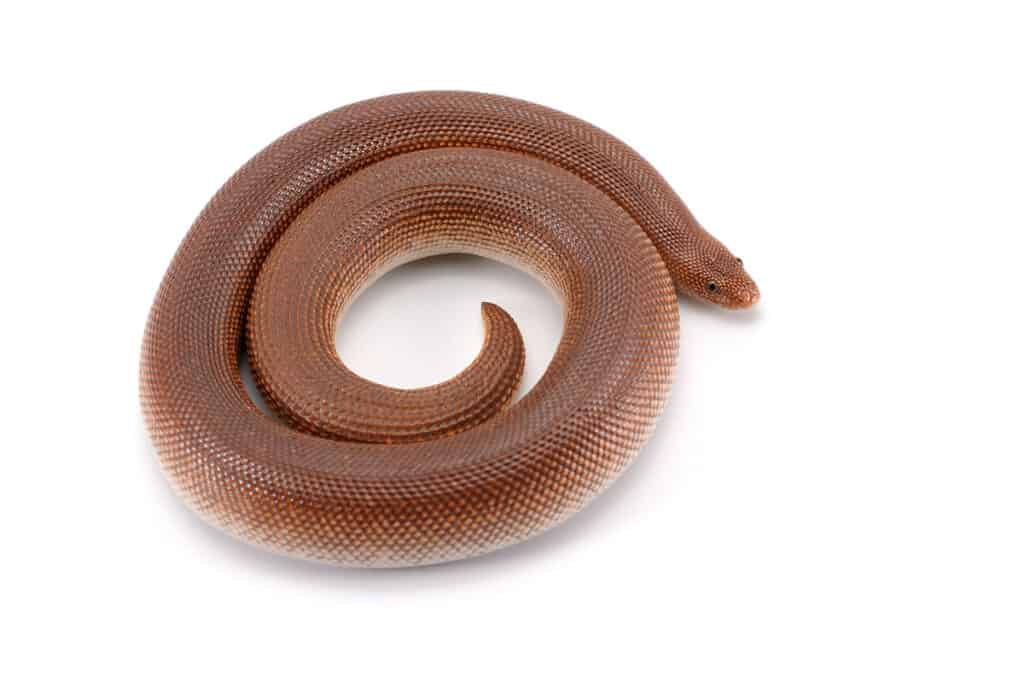
The rufescens morph is likely a hybrid between two Kenyan sand boa subspecies
©iStock.com/PetlinDmitry
The rufescens morph doesn’t have blotches, spots, or clear patterns. Instead, it has a dark brown body that “blushes” into orange near the belly line. The actual belly of the snake is white, lined by those orange scales on the sides.
Aside from being visually interesting, the rufescens morph is a bit of a mystery. There has been some speculation that the original lines came from a cross between a Kenyan sand boa and a close subspecies (Eryx colubrinus rufescens). If so, this morph would be classified as a hybrid snake.
Cost: $250+
10. Snow
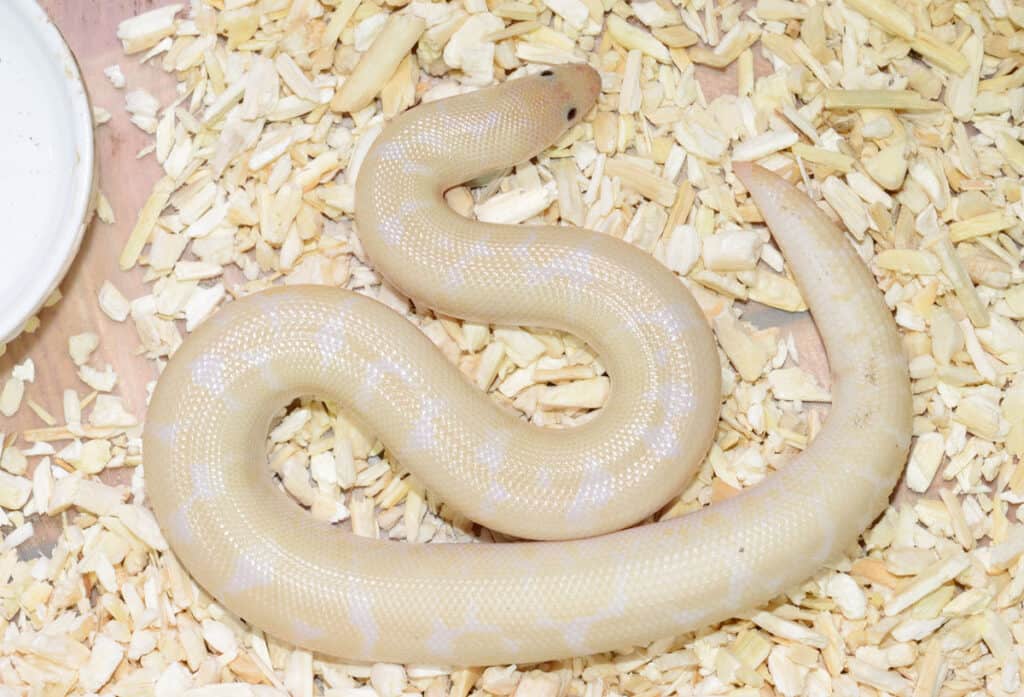
Snow morphs are created by crossing albino and anery morphs
©iStock.com/cowboy5437
The snow morph is present in most pet snakes and usually comes from the cross of an anery and an albino morph. Without dark pigmentation or red and orange pigmentation, the snake is stark white. They are incredibly beautiful and are often combined with other morphs since the “template” of a stark white snake is so clean.
Cost: $200
11. Striped
The striped morph is precisely what it sounds like! These morphs have a jagged stripe running down their spines instead of the standard splotches that a wildtype would have. Stripe morphs exist on their own, but they are often combined with other morphs in order to change both color and pattern.
Cost: $100
A List of Common Sand Boa Morphs
We covered some of the basic morphs, but there are a lot more! Here are some of the basic traits, plus a few combination morphs you could also find with Kenyan sand boas:
- Albino
- Anery
- Blonde Albino
- Cal Flame
- Canary Dodoma
- Dodoma
- Gene X
- Granite
- Holloway Reduced Pattern
- Hypo
- Normal
- Paint
- Paradox
- Paradox Albino
- Rufescens
- Splash
- Splatter
- Stripe
The photo featured at the top of this post is © reptiles4all/Shutterstock.com
Discover the "Monster" Snake 5X Bigger than an Anaconda
Every day A-Z Animals sends out some of the most incredible facts in the world from our free newsletter. Want to discover the 10 most beautiful snakes in the world, a "snake island" where you're never more than 3 feet from danger, or a "monster" snake 5X larger than an anaconda? Then sign up right now and you'll start receiving our daily newsletter absolutely free.
Thank you for reading! Have some feedback for us? Contact the AZ Animals editorial team.






